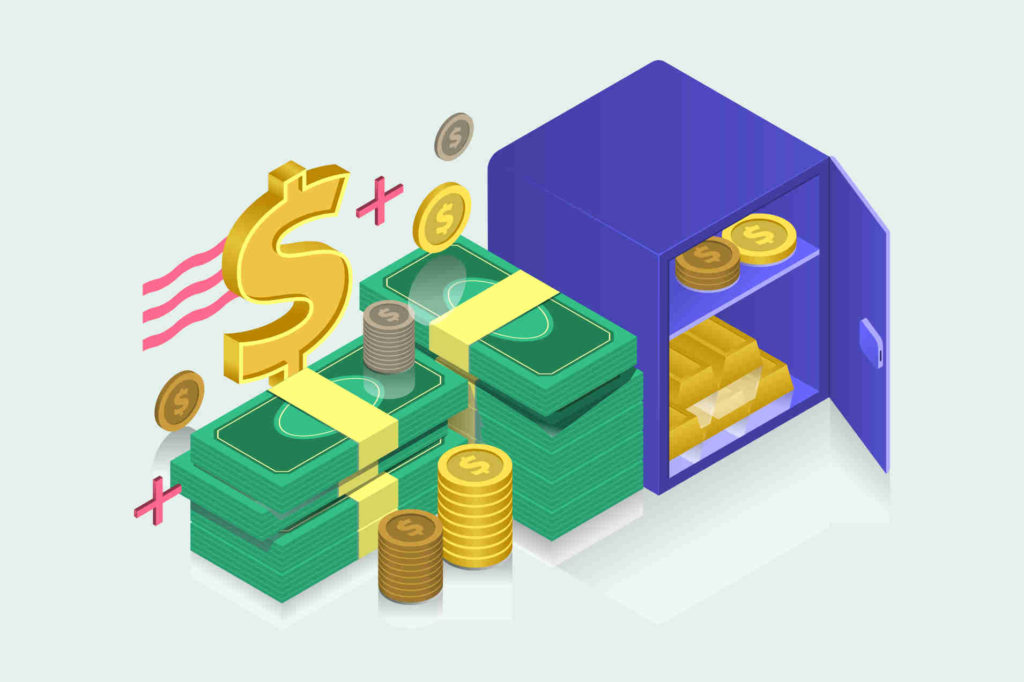Correlation between the Price of Gold and U.S. Dollar Movement
- As published in financial times, The analysts at Citigroup says that within the next two years, as US economic growth fades and the Federal Reserve cuts interest rates, the price of gold could reach a record high of $2,000 an ounce
- According to CNBC, Spot gold was down 1% at $1,498.35 per ounce, while U.S. gold futures fell 0.97% to $1,508.7 on July 2019
Have you ever wondered how the gold price and U.S. dollars movement affects each other? To understand this in a most common way, the relationship is based on the fact that stronger the value of the U.S. dollar, the lower is the price of gold. Similarly, the weaker the U.S. dollar, the higher the price of gold. The factors that help to strengthen the dollar are positive jobs report, decline in oil prices, increasing consumer confidence and rise in real estate values.

Nevertheless, even though gold basically has an inverse relationship with dollar, it’s not always the case as there have been times when gold and the U.S. dollar have risen together due to global supply vs. demand factor.
From the year 1971, Gold started moved to floating exchange rates. This made its price vulnerable to the U.S. dollar’s external value. In 2008, the International Monetary Fund (IMF) estimated that 40–50% of the shift in the gold prices since 2002 were mainly dollar-related. Effective external value of the U.S. dollar by 1% change led to more than a 1% change in gold prices.
According to analysts at Citigroup ,The New York-based bank confirmed that then gold could top levels last seen eight years ago, when gold surged to $1,900 an ounce, as uncertainty over the 2020 presidential election combines with a faltering domestic economy.
Investors around the world are usually attracted towards gold at a time of negative bond yields. Bonds of around $15.3 trillion are traded at levels that guarantee buyers a loss and when bonds are held to maturity. The gold price has risen by 17% this year to trade at $1,495 a troy ounce, investing the precious metal at the top.
As per Citi, a mix of lower rates, growing risks of a global decline, and strong demand among central banks could push prices above still and according to the World Gold Council, Central banks are buying more gold this year (2019) than any year in the past nine.
The Chinese government has just sent two powerful indicator to the US that will suspend imports of US agricultural products and lower its currency below the key 7 to the dollar threshold , a first since the financial crash in 2008. This is in retribution to US president Donald Trump’s threat to levy a 10% tariff on $300 billion in Chinese imports mainly from September 1, 2019.

As per Citi, a mix of lower rates, growing risks of a global decline, and strong demand among central banks could push prices above still and according to the World Gold Council, Central banks are buying more gold this year (2019) than any year in the past nine.
The Chinese government has just sent two powerful indicator to the US that will suspend imports of US agricultural products and lower its currency below the key 7 to the dollar threshold , a first since the financial crash in 2008. This is in retribution to US president Donald Trump’s threat to levy a 10% tariff on $300 billion in Chinese imports mainly from September 1, 2019.
China, a big foreign-exchange holders has $3.1trillion in reserves and have been keen to diversify their portfolios to limit openness to the US dollar.Over the past nine months, China’s central bank has bought $4.8 billion worth of gold .The People’s Bank of China expanded its holdings of gold to 62.45 million ounces in August 2019, from 59.24 million in November.
During last period, central banks bought the most gold in 50 years, led by Russia, whose holdings of gold are now worth around $100 billion. The actual composition of China’s foreign exchange reserves is a state confidentiality, but officials before hand said that the currency mix is broadly in line with the composition of global reserves as recorded by IMF data collected from member countries and according to the latest data, US dollar assets comprised 64%of allocated reserves by the end of 2016.
INTL FCStone analyst Rhona O’Connell expect that (Fed Chairman Jerome Powell) will be looking to reflect again on the state of the international economy and probably pave the way for a 25-basis point cut in the Fed funds target rate as lower interest rates reduce the opportunity cost of holding non-yielding bullion and weigh on the dollar, making gold cheaper for investors holding other currencies.
However, it’s necessary to understand that it’s possible for the gold price and U.S. dollar to rise at the same time period. This can occur due to crisis in some other country or region. This would ultimately lead drove to safer assets, the U.S. dollar and gold. The U.S. dollar is also directed by many factors such as monetary policy and inflation in the U.S. vs in other countries and also forced by economic prospects in the U.S. vs. other countries. Consequently, Investors need to consider all of these factors.








